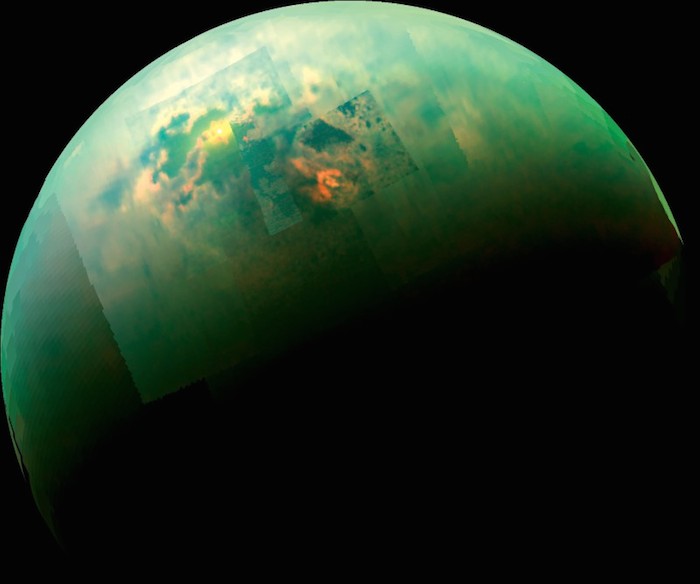.

The Cassini probe caught a glimpse of Titan’s polar seas (Image: NASA/JPL-Caltech/Univ. Arizona/Univ. Idaho)
-
And now, the shipping forecast for Titan. Missions to explore the oceans on Saturn’s largest moon might have to contend with powerful currents driven by solar energy.
Titan is the only place in the solar system, besides Earth, that has large bodies of liquid on its surface, though its seas are composed of hydrocarbons such as methane rather than water. Now researchers have built simulations of currents in the large seas in the moon’s northern hemisphere, using maps created from radar data collected by the Cassini probe.
Because Titan’s seas are mostly methane, they behave rather differently to those on Earth. Water takes a lot of energy to heat, and our oceans are very deep, so sunlight only raises the temperature near the surface.
Deep heat
On Titan, if the seas aren’t too murky, sunlight could bring heat into the deep sea and make the methane less dense. The simulation predicts that a combination of the moon’s rotation and the way heat accumulates differently at the surface and at depth means this would cause anticlockwise currents near the sea surface and clockwise currents near the bottom, creating gyres. These large systems of rotating currents are common in Earth’s oceans, where they are driven by wind.
“This heating process is essentially insignificant on Earth,” says Ralph Lorenz at the Johns Hopkins University Applied Physics Laboratory in Baltimore, Maryland, who was behind the simulations. “What we found is that it can cause currents that are comparable with tidal and wind-driven currents.”
The work has practical implications for missions to explore Titan’s seas. Proposed Titan submarines would also need to know how much power is required to navigate in the methane currents.
The major input parameters for the model were based on assumptions or other models, rather than observations, so it is unlikely to describe the true situation, says Sugata Tan, at the Planetary Science Institute in Tucson, Arizona. A more complete evaluation will be possible in the near future when more data from Titan’s seas are available, he adds.
We won’t know for sure what Titan’s currents are like until we have a probe collecting data there. “Extraterrestrial oceanography is still in its early days,” says Lorenz.
Quelle: NS
4475 Views
